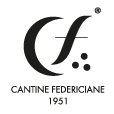The Phlegraean Fields are made of a complex set of geological structures generated by eruptions related to several volcanic cycles. The oldest rock can be dated between 47,000 and 37,000 years ago, stratigraphically subjected to the tufa formations. Another ancient sediment, probably connected with a cycle of greater activity of the Phlegraean Fields and Procida or of the Piana Campana, is the one of the catastrophic eruption of the Ignimbrite Campana ( 42.000- 24.000 years ago), whose deposit can be found until the Appennines at altitudes of 1000 m s.l. Around 11,000 years ago, after a long period of stasis, the volcanic activity resumed with the cycle of the so-called “yellow tuffs”. The formation of yellow tufa are the bare bones of the Neapolitan and Phlegraean hillls. The volcanoes of Agnano, Astroni, Solfatara, Baia and Averno are also part of the recent cycle. A land of this complexity carries in itself the precious components that give to vines cultivated there a set of characteristics that make it unique and not replicable in another environment.
Planted in the Phlegraean Fields by the first Greek colonists, the vine was then exported to the rest of Europe, assuming different characteristics depending on the soil and on the climatic and environmental conditions in which it took root. Many historical sources attested already in ancient times, the origin of the vine as well as the quality of the wines. Today in these volcanic places, our vineyards produce a wine D.O.P. Campi Flegrei that expresses all the peculiarities, in the colors and in the complexity of the scents and flavors, of a “fervent land” rich in nutritive elements and in an extremely favorable climate.
Campi Flegrei
Penisola Sorrentina
The geological structure of the Sorrentine Peninsula is not homogeneous and unified at all; it has significant parts of formation (dolomitic and calcareous rocks), projected pyroclastic parts and subsequent ashes and pumice, constituting also from the geo-morphological and geo- soil point of view a complex structure. The Monti Lattari Ridge – Sorrentine Peninsula is mostly formed by dolomitic, calcareous-dolomitic and calcareous rocks, stratified in layers and benches of variable thickness. The geography of the Sorrentine Peninsula indeed has changed considerably as a result of the deposition of volcanic sediments and in particular the deposition of the Tufo Grigio Campano which stuck in a preexisting basin, has formed the Piana di Sorrento, surrounded by hills on three sides and bounded, to the north, by the sea. It represent from a landscape and anthropological point of view, the most typical and characteristic aspect of the Sorrentine Peninsula.
The latest investigations agree upon considering the gray tuff as the result of an enormous explosive eruption of a volcanic edifice, the ancestor of the Phlegraean Fields volcanoes, known as “Archiflegreo” that with this eruption ceased its activity, in fact the explosion caused the destruction and the sinking of the central part of the edifice with the formation of the ‘Archiflegrea Caldera’ in which progressively the most recent Phlegraean volcanoes developed. Not surprisingly, along the coastal cliffs the lower part of the wall is always rather compact while the upper part is characterized by typical forms of wind erosion. On this complex base was born the viticulture of the Sorrentine Peninsula that can be defined as a full “heroic viticulture” for the harshness of the lands on which it is carried out and that sees vines climbing on impervious terraces overlooking at the same time to breathtaking landscapes. It’s worth cultivating the grapevine in the Sorrentine Peninsula, its wines express the versatility of the components that have matured the grapevine.
Extremely fruity wines, often sparkling, with explosive aromas that invite
Sessa Aurunca
In the past this area was the land peopled by the Auruncis, a population belonging to the Indo-European stump established in the upper part of Campania and in the lower part of Lazio. The volcanic Roccamonfina massif, now extinct, remains decisive in the characterization of local pedogenesis since all the agricultural soils, especially the hilly ones, derived from the disintegration of the lava flows and pyroclastic eruptions that occurred in the Pleistocene age. Geologically the soils present, underneath a short blanket of alteration and up to a considerable depth, as can be reconstructed from surface observations, are mainly made up of pozzolana and volcanic sands mixed with pumice and lava fragments with levels of thephritic and leucitic lavas of the Pleistocene age , coming from the emission centers of the Roccamonfina volcanic complex. This genesis generated soils that are well equipped with all the essential macroelements of any agricultural cultivation and the presence of a discreet group of microelements, making these soils a particularly suitable substrate for the cultivation of the vine, making the products from this derivative valuable and rich in substances polyphenolic. The eruptions of pyroclastic materials occurred in the Pleistocene age were of enormous size and range and that’s the reason why it is known that the Roccamonfina volcanic complex is one of the largest volcanic relicts in Europe. At the foot of the extinct volcano, which has made the territory unique, there’s the “Vigna Li Paoli”. Three hectares of primitive exposed at noon at an altitude of 400 meters.
The wine made from it,it’s called ROCCIA MADRE, the. Its name recalls the power of the volcano and the hardness of the earth rich in primeval rock.
